Cao
Visit to download the full and correct content document: https://textbookfull.com/product/animal-law-and-welfare-international-perspectives-1st -edition-deborah-cao/
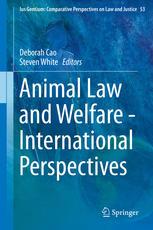
More products digital (pdf, epub, mobi) instant download maybe you interests ...
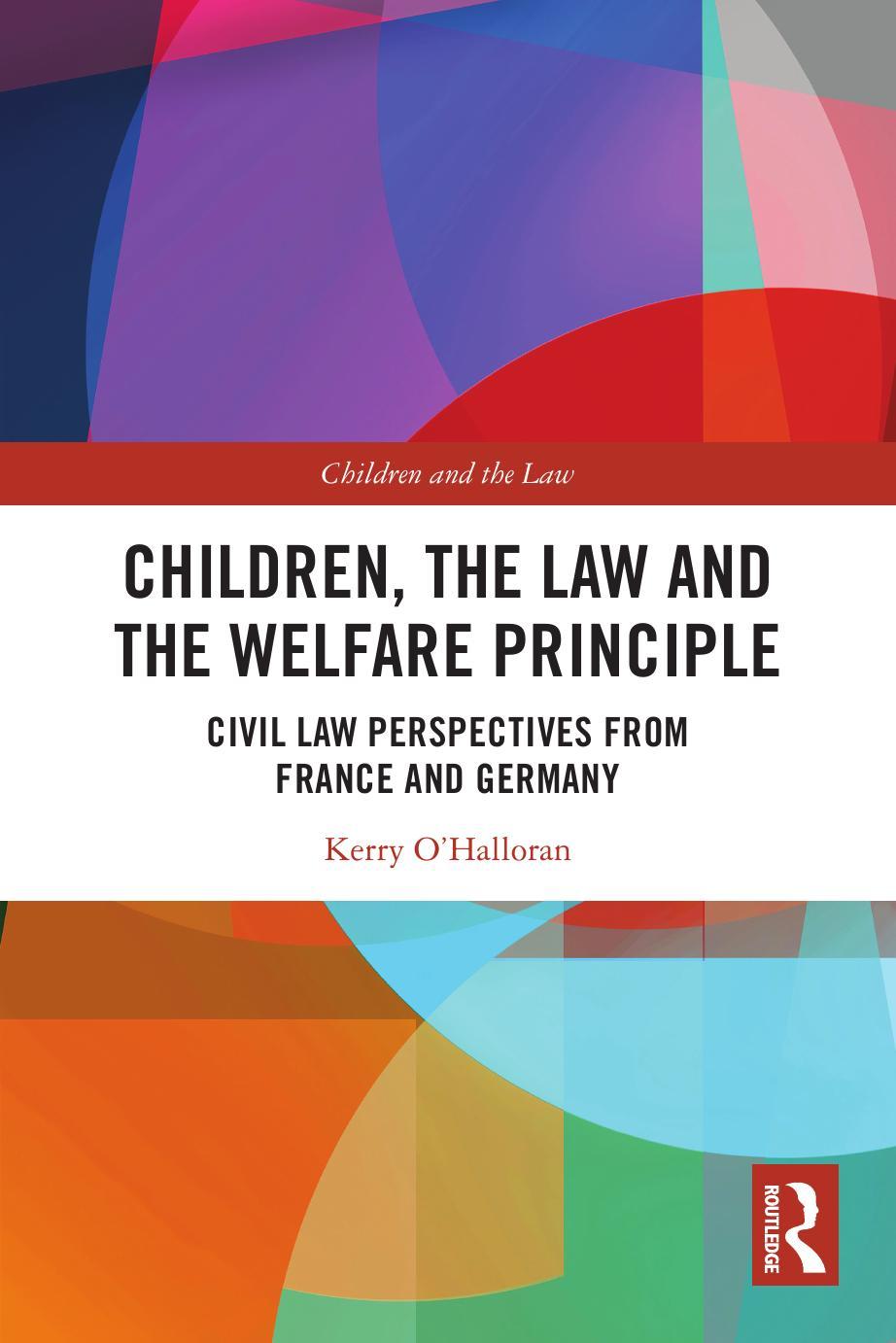
Children, the Law and the Welfare Principle: Civil Law Perspectives from France and Germany 1st Edition Kerry
O’Halloran
https://textbookfull.com/product/children-the-law-and-thewelfare-principle-civil-law-perspectives-from-france-andgermany-1st-edition-kerry-ohalloran/
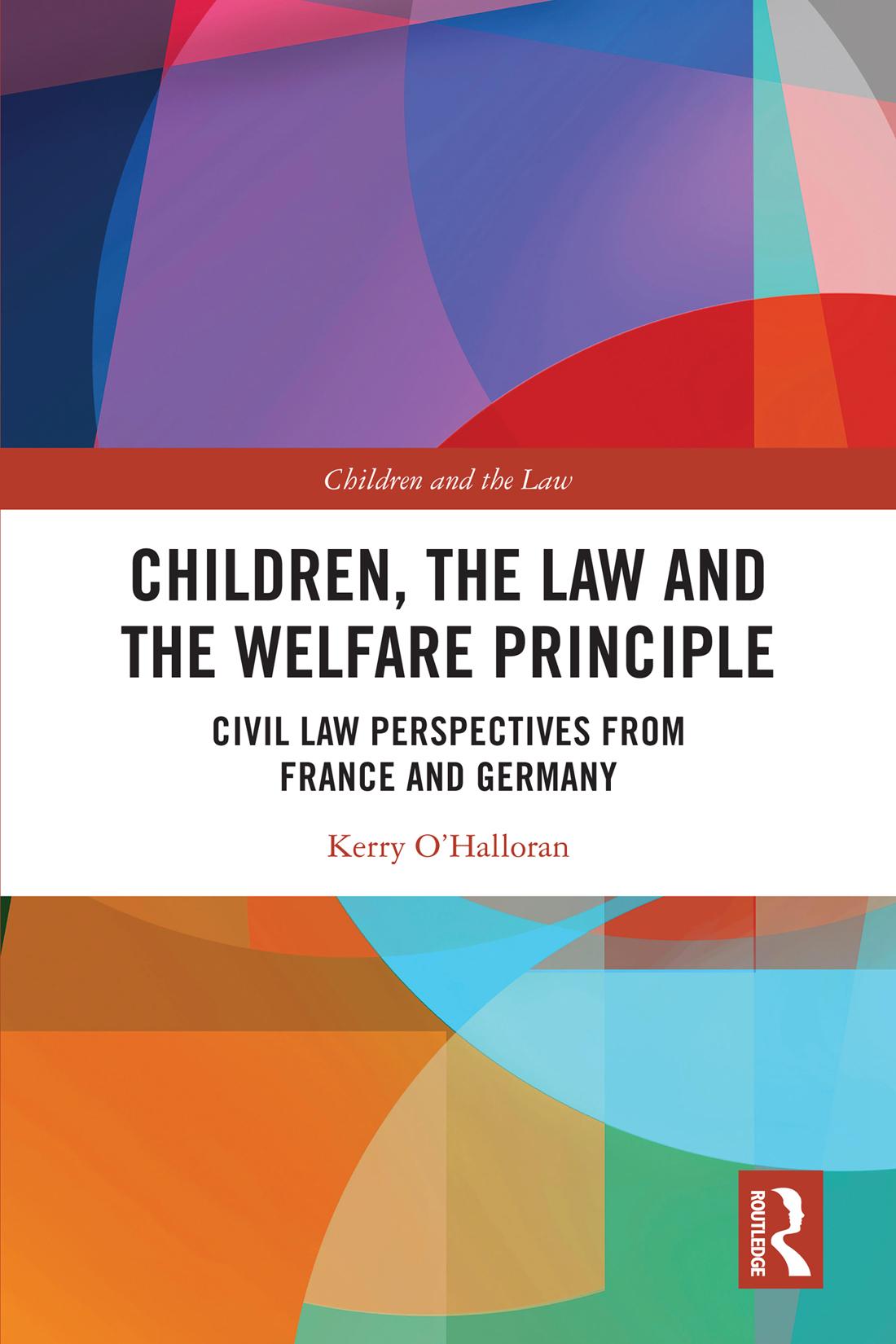
Children the Law and the Welfare Principle Civil Law
Perspectives from France and Germany 1st Edition Kerry
O Halloran
https://textbookfull.com/product/children-the-law-and-thewelfare-principle-civil-law-perspectives-from-france-andgermany-1st-edition-kerry-o-halloran/
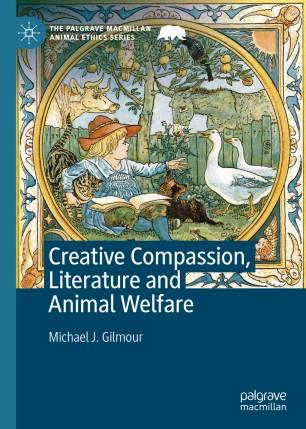
Creative Compassion, Literature and Animal Welfare
Michael J. Gilmour
https://textbookfull.com/product/creative-compassion-literatureand-animal-welfare-michael-j-gilmour/
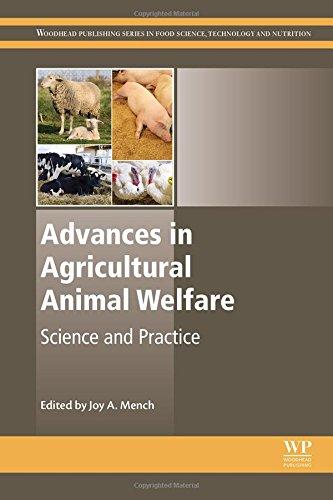
Advances in Agricultural Animal Welfare Science and Practice 1st Edition Joy Mench
https://textbookfull.com/product/advances-in-agricultural-animalwelfare-science-and-practice-1st-edition-joy-mench/
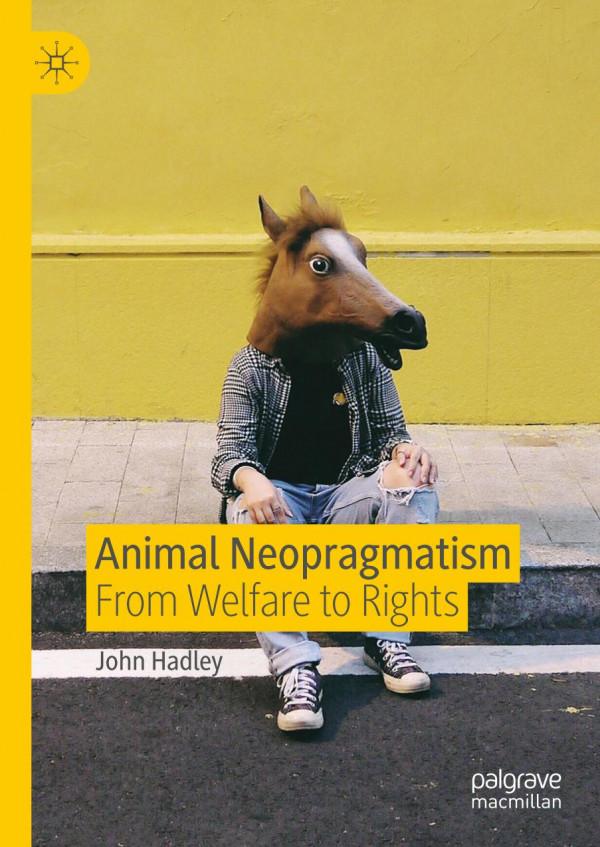
Animal Neopragmatism: From Welfare to Rights John Hadley
https://textbookfull.com/product/animal-neopragmatism-fromwelfare-to-rights-john-hadley/
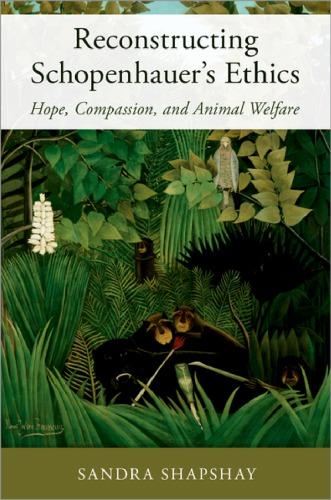
Reconstructing Schopenhauer’s Ethics: Hope, Compassion, and Animal Welfare Sandra Shapshay
https://textbookfull.com/product/reconstructing-schopenhauersethics-hope-compassion-and-animal-welfare-sandra-shapshay/
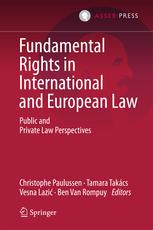
Fundamental Rights in International and European Law Public and Private Law Perspectives 1st Edition Christophe Paulussen
https://textbookfull.com/product/fundamental-rights-ininternational-and-european-law-public-and-private-lawperspectives-1st-edition-christophe-paulussen/
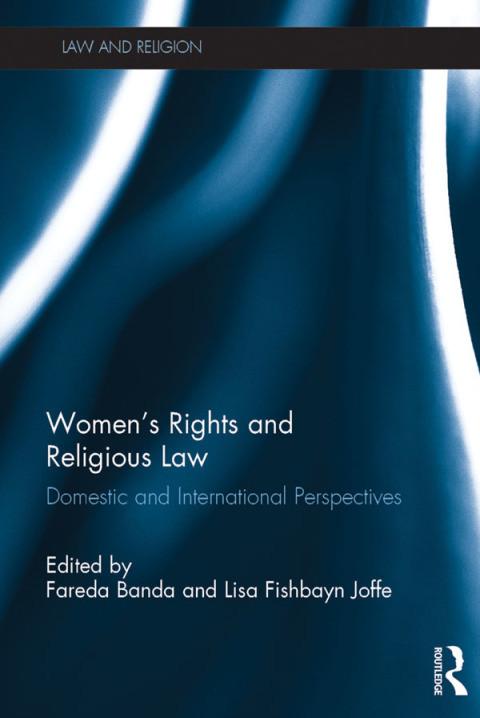
Women s Rights and Religious Law Domestic and International Perspectives 1st Edition Parmod Kumar
https://textbookfull.com/product/women-s-rights-and-religiouslaw-domestic-and-international-perspectives-1st-edition-parmodkumar/
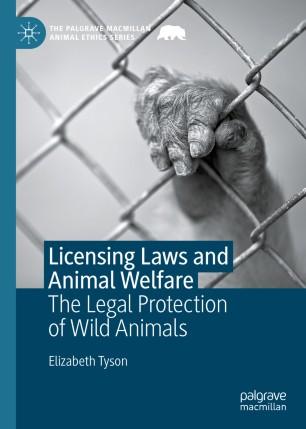
Licensing Laws and Animal Welfare: The Legal Protection of Wild Animals Elizabeth Tyson
https://textbookfull.com/product/licensing-laws-and-animalwelfare-the-legal-protection-of-wild-animals-elizabeth-tyson/

Deborah Cao
Steven White Editors
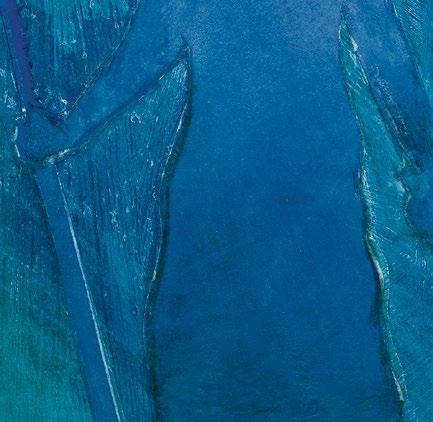


Animal Law and WelfareInternational Perspectives
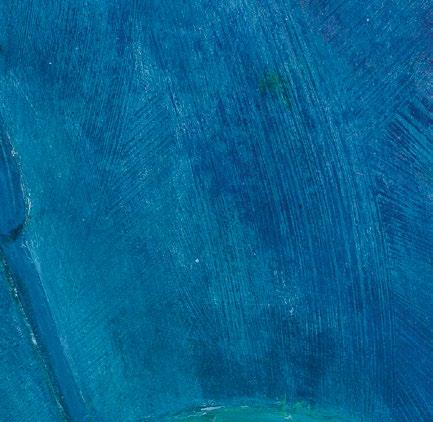


Ius Gentium: Comparative Perspectives on Law and Justice
Volume 53
Series Editors
Mortimer Sellers, University of Baltimore
James Maxeiner, University of Baltimore
Board of Editors
Myroslava Antonovych, Kyiv-Mohyla Academy
Nadia de Araújo, Pontifical Catholic University of Rio de Janeiro
Jasna Bakšic-Muftic, University of Sarajevo
David L. Carey Miller, University of Aberdeen
Loussia P. Musse Félix, University of Brasilia
Emanuel Gross, University of Haifa
James E. Hickey, Jr., Hofstra University
Jan Klabbers, University of Helsinki
Cláudia Lima Marques, Federal University of Rio Grande do Sul
Aniceto Masferrer, University of Valencia
Eric Millard, West Paris University
Gabriël A. Moens, Curtin University
Raul C. Pangalangan, University of the Philippines
Ricardo Leite Pinto, Lusíada University of Lisbon
Mizanur Rahman, University of Dhaka
Keita Sato, Chuo University
Poonam Saxena, University of Delhi
Gerry Simpson, London School of Economics
Eduard Somers, University of Ghent
Xinqiang Sun, Shandong University
Tadeusz Tomaszewski, Warsaw University
Jaap de Zwaan, Erasmus University Rotterdam
More information about this series at http://www.springer.com/series/7888
Deborah Cao • Steven White Editors
Animal Law and WelfareInternational Perspectives
Editors Deborah Cao Law Futures Centre
Griffith University
Brisbane, QLD, Australia
Steven White Griffith Law School
Griffith University
Brisbane, QLD, Australia
ISSN 1534-6781
ISSN 2214-9902 (electronic)
Ius Gentium: Comparative Perspectives on Law and Justice
ISBN 978-3-319-26816-3
DOI 10.1007/978-3-319-26818-7
ISBN 978-3-319-26818-7 (eBook)
Library of Congress Control Number: 2016930403
Springer Cham Heidelberg New York Dordrecht London
© Springer International Publishing Switzerland 2016
This work is subject to copyright. All rights are reserved by the Publisher, whether the whole or part of the material is concerned, specifically the rights of translation, reprinting, reuse of illustrations, recitation, broadcasting, reproduction on microfilms or in any other physical way, and transmission or information storage and retrieval, electronic adaptation, computer software, or by similar or dissimilar methodology now known or hereafter developed.
The use of general descriptive names, registered names, trademarks, service marks, etc. in this publication does not imply, even in the absence of a specific statement, that such names are exempt from the relevant protective laws and regulations and therefore free for general use.
The publisher, the authors and the editors are safe to assume that the advice and information in this book are believed to be true and accurate at the date of publication. Neither the publisher nor the authors or the editors give a warranty, express or implied, with respect to the material contained herein or for any errors or omissions that may have been made.
Printed on acid-free paper
Springer International Publishing AG Switzerland is part of Springer Science+Business Media (www. springer.com)
Contributors
David Bilchitz Department of Public Law, University of Johannesburg, Johannesburg, South Africa
Donald M. Broom Centre for Animal Welfare and Anthrozoology, Department of Veterinary Medicine, University of Cambridge, Cambridge, UK
Deborah Cao Law Futures Centre, Griffith University, Brisbane, QLD, Australia
David Favre Animal Legal & Historical Center, Michigan State University College of Law, East Lansing, MI, USA
Jed Goodfellow Department of Law, Macquarie University, Sydney, NSW, Australia
Nicki McGrath Centre for Animal Welfare and Ethics, School of Veterinary Science, University of Queensland, Gattton, QLD, Australia
Clive J.C. Phillips Centre for Animal Welfare and Ethics, School of Veterinary Science, University of Queensland, Gatton, QLD, Australia
Joan E. Schaffner George Washington University Law School, Washington, DC, USA
Tagore Trajano de Almeida Silva Tiradentes University, Aracaju, Sergipe, Brazil
Joy M. Verrinder Centre for Animal Welfare and Ethics, School of Veterinary Science, University of Queensland, Gatton, QLD, Australia
Paul Waldau Canisius College, Buffalo, NY, USA
Steven White Grifith Law School, Griffith University, Brisbane, QLD, Australia
Yossi Wolfson Attorney-at-Law, Jerusalem, Israel
About the Authors
David Bilchitz is a professor at the University of Johannesburg and director of the South African Institute for Advanced Constitutional, Public, Human Rights and International Law (SAIFAC). He is also secretary-general of the International Association of Constitutional Law (IACL). He has a BA (Hons) LLB from Wits University and graduated with an MPhil and PhD from the University of Cambridge. He publishes widely in the field of constitutional and fundamental rights law and has authored the monograph Poverty and Fundamental Rights: The Justification and Enforcement of Socio-Economic Rights (Oxford University Press, 2007). He has published several pioneering articles on animals and the law in South Africa and is also involved actively in promoting efforts to improve the protections for animals in the laws of South Africa through law reform, litigation and campaigning. He has helped in the campaigns to prevent elephant culling and to strengthen the legal framework governing performing animals.
Donald M. Broom is emeritus professor of animal welfare, Cambridge University, Department of Veterinary Medicine, and has developed concepts and methods of scientific assessment of animal welfare and studied cognitive abilities of animals, the welfare of animals in relation to housing and transport, behaviour problems, attitudes to animals and ethics of animal usage. He has published over 300 refereed papers, lectured on animal welfare in 43 countries and served on UK (FAWC, APC, Seals) and Council of Europe committees. He has been chairman or vice-chairman of EU Scientific Committees on Animal Welfare (1990–2009) and a member of the European Food Safety Authority (EFSA) Scientific Panel on Animal Health and Welfare until June 2012. He chaired the O.I.E. group on Welfare of Animals during Land Transport. His books include Stress and Animal Welfare, The Evolution of Morality and Religion, Domestic Animal Behaviour and Welfare and Sentience and Animal Welfare.
Deborah Cao is a professor at Griffith University, Australia. She is a linguist and legal scholar. She has published in areas including legal theory, legal semiotics, legal translation, the philosophical and linguistic analysis of Chinese law and legal culture and animal law. She is also editor of the International Journal for the Semiotics of Law. Her books include Chinese Law: A Language Perspective (Ashgate, 2004), Translating Law (Multilingual Matters, 2007), Animals Are Not Things (China Law Press, 2007), Animal Law in Australia and New Zealand (Thomson Reuters, 2010), While the Dog Gently Weeps (China Jilin University Press, 2010), Animal Law in Australia (2nd ed. Thomson Reuters, 2015), Animals in China: Law and Society (Palgrave Macmillan, 2015) and Law and Language in China (Rowman & Littlefield, forthcoming). She was named one of the top 200 most influential blog writers in China in 2012.
David Favre is a professor of law at Michigan State University College of Law, USA. Over the past 30 years, Professor Favre has written several articles and books dealing with animal issues including such topics as animal cruelty, wildlife law, the use of animals for scientific research, respectful use and international control of animal trade. His books include the case book Animal Law: Welfare, Interest, and Rights (2nd ed.), Animal Law and Dog Behavior and International Trade in Endangered Species. He introduced the concept of “Living Property” which was developed in a number of law review articles over the past decade. He created and is editor in chief of the largest animal legal web resource, www.animallaw.info Now residing on a farm in lower Michigan, Professor Favre shares his space with sheep, chickens and the usual assortment of dogs and cats.
Jed Goodfellow is a PhD candidate within the Legal Governance Concentration of Research Excellence at Macquarie Law School, Australia. His research concerns the animal welfare regulatory framework within the Australian agricultural sector. Jed also teaches animal law at Macquarie University and works as a policy officer for RSPCA Australia with a focus on legislative and regulatory issues affecting animal welfare. Previously, Jed practised as a prosecutor for RSPCA South Australia and a solicitor for a leading commercial law firm. Jed also served as an animal cruelty inspector for RSPCA Queensland throughout his undergraduate studies.
Nicki McGrath is currently studying for PhD in chicken vocalisations and their interpretation with the Centre for Animal Welfare and Ethics at the University of Queensland’s School of Veterinary Science, Australia. She has a master’s in applied animal behaviour and welfare from Edinburgh University, for which she conducted a study of public understanding of animals’ experiences of grief in Brisbane. She also spent 2 years setting up and running a wildlife research expedition in the Amazon, where she was responsible for bird call research. She has 11 years’ experience in the corporate workplace.
Clive J. C. Phillips studied agriculture at Reading University and obtained a PhD in dairy cow nutrition and behaviour from the University of Glasgow. He lectured in farm animal production and medicine at the Universities of Cambridge and Wales and conducted research into cattle and sheep welfare. As the inaugural holder of the University of Queensland Chair in Animal Welfare, Australia, he is now involved in research in animal welfare and ethics and the development and implementation of Australian State and Federal government animal welfare policies. He has written widely on animal welfare and management in scientific journals, blogs and books, and he edits a new journal in the field, Animals, and a series of books on animal welfare for Springer.
Joan E. Schaffner, is an associate professor of law at the George Washington University Law School, USA. She received her BS in mechanical engineering (magna cum laude) and JD (Order of the Coif) from the University of Southern California and her MS in mechanical engineering from the Massachusetts Institute of Technology. In addition to teaching civil procedure, sexuality and the law and remedies, she directs the George Washington University Animal Law Program and has presented on animal law panels at conferences worldwide. She is the author of Introduction to Animals and the Law (Palgrave Macmillan, 2011), a co-author and editor of A Lawyer’s Guide to Dangerous Dog Issues (ABA, 2009) and Litigating Animal Law Disputes: A Complete Guide for Lawyers (ABA, 2009) and author of several book chapters including “Canine Profiling” in Global Guide to Animal Protection (Univ. Illinois Press, 2013), “Animal Cruelty and the Law: Permitted Conduct” in Animal Cruelty: A Multidisciplinary Approach (Carolina Academic Press, 2013) and “Laws and Policy to Address the Link of Family Violence” in The Link Between Animal Abuse and Humane Violence (Sussex Academic Press, 2009). She is active in various organisations including the past chair of ABA TIPS Animal Law Committee, founding chair of the American Association of Law Schools Section on Animal Law and fellow of the Oxford Centre for Animal Ethics. In 2013 she received the Excellence in the Advancement of Animal Law Award from the American Bar Association, Tort Trial & Insurance Practice Section.
Tagore Trajano de Almeida Silva is a practising lawyer in Brazil and president of the Institute for Animal Abolitionist (www.abolicionismoanimal.org.br). He received his postdoctorate in law from Pace Law School and his PhD and master’s in public law from the Federal University of Bahia. He has been a visiting researcher at the University of Science and Technology of China, serves as the editor of the Brazilian Animal Rights Review (www.animallaw.info#international) and has coordinated several world conferences on bioethics and animal rights. He is an expert on issues relating to Brazilian constitutional and environmental law as well as bioethics and animal law and has published articles in Brazil and the USA on comparative law issues. In addition to teaching postgraduate courses in environmental law at the Federal University of Bahia, Professor Trajano is a founding member of the Asociación Latinoamericana de Derecho Ambiental. His research papers can be viewed on SSRN: http://ssrn.com/author=1855392.
Joy M. Verrinder is currently studying for a PhD in animal ethics education with the Centre for Animal Welfare and Ethics at the University of Queensland’s School of Veterinary Science, Australia. She has a master’s in professional ethics and governance and a master’s in business administration focusing on public policy and strategic planning. For the past 10 years as strategic development officer of the Animal Welfare League Queensland, she has been progressing legislation and policy changes at local, state and national levels to prevent the killing of abandoned cats and dogs in pounds and shelters in Australia. Joy has served on government animal ethics committees and boards of various animal organisations. She has also been an educator and deputy principal in secondary schools.
Paul Waldau is an educator, scholar and activist working at the intersection of animal studies, law, ethics, religion and cultural studies. A professor at Canisius College in Buffalo, New York, Paul has been the lead faculty member for the master of science graduate programme in anthrozoology since its founding in 2011 and director of the programme since September of 2015. Paul has also taught animal law at Harvard Law School since 2002. He also teaches Harvard’s summer term course “Animals: Religion and Ethics”. The former director of the Centre for Animals and Public Policy, Paul taught veterinary ethics and public policy at Tufts University School of Veterinary Medicine for more than a decade. Paul has completed five books, the most recent of which are Animal Studies: An Introduction (Oxford University Press, 2013) and Animal Rights (Oxford University Press, 2011). He is also coeditor of A Communion of Subjects: Animals in Religion, Science, and Ethics (Columbia University Press, 2006) and An Elephant in the Room: The Science and Well-Being of Elephants in Captivity (Center for Animals and Public Policy, 2008). His first book was The Specter of Speciesism: Buddhist and Christian Views of Animals (Oxford University Press, 2001).
Steven White is a lecturer at Griffith University, Australia. He has published widely on animal law, including coediting Animal Law in Australasia (Federation Press, 2nd ed., 2013). He continues to teach one of the first undergraduate courses offered on animal law in Australia and for a number of years has been a consultant to Brisbane law firm Couper Geysen – Family and Animal Law. Steven will be completing a PhD in 2016 on the regulation of the protection of companion and farm animals in Queensland, Australia.
Yossi Wolfson is an Israeli attorney-at-law and an animal liberation activist. His legal work has included representation of human and nonhuman animal rights organisations in courts in constitutional, administrative and civil cases. He has been involved in the animal liberation movement since the 1980s and took part in some of the principal campaigns and legal cases for animals in Israel, as well as in legislation processes.
Chapter 1 Introduction: Animal Protection in an Interconnected World
Steven White and Deborah Cao
1.1 Introduction
In our increasingly interconnected and wired world, some of the biggest global stars have been nonhuman animals. On blogs, on Facebook and all around the Internet, claws and clicks go hand in hand or paw in paw, with the furry claiming cyberspace. In 2014, one of the most emailed stories on The New York Times’s website was about the biology of cats.1 According to media reports, there has been a sharp rise in the proportion of American dog and cat owners with provisions in their wills for their pets, with nearly one in every ten now making such arrangements.2 One of the most fervently embraced documentaries of 2013 was Blackfish, shown over and over on CNN. And these are not just “feel good” stories about cute and cuddly animals. They are about animal suffering, animal science, animal intelligence and cognition, animal behaviour and social life, animal welfare and law, and above all, animal dignity, rights and justice. For instance, in a New York Times’s op-ed piece, the commentator writes about “according animals dignity”.3 These topics are not academic jargon but increasingly entering the popular cyber parlance. In the meantime, apart from stories and images of animals going viral in traditional and social
1 http://www.nytimes.com/2014/01/07/science/cat-sense-explains-what-theyre-really-thinking. html
2 http://www.nytimes.com/2014/01/14/opinion/bruni-according-animals-dignity.html?_r=0
3 http://www.nytimes.com/2014/01/14/opinion/bruni-according-animals-dignity.html?_r=0
S. White (*)
Griffith Law School, Griffith University, Brisbane, QLD, Australia
e-mail: steven.white@griffith.edu.au
D. Cao
Law Futures Centre, Griffith University, Brisbane, QLD, Australia
e-mail: d.cao@griffith.edu.au
1 © Springer International Publishing Switzerland 2016
D. Cao, S. White (eds.), Animal Law and Welfare - International Perspectives, Ius Gentium: Comparative Perspectives on Law and Justice 53, DOI 10.1007/978-3-319-26818-7_1
S. White and D. Cao
media around the world, significant legal battles are being fought on behalf of animals, for instance, in the International Court of Justice in the Hague and in the courtrooms of New York. At the end of 2013, a team of lawyers was filing writs of habeas corpus in New York on behalf of four captive chimpanzees as part of the Nonhuman Rights Project.4 At the other end of the world, in Australia, a group of animal lawyers, scientists and scholars was gathering to discuss animal law and animal welfare, the result of which is this edited book.
The symposium, held on the Gold Coast in Australia in early-December 2013, was designed to provide a small number of animal law and animal welfare science scholars the time to meet for 2 days of intensive discussion and debate. The symposium, by contrast with the usual conference format of a short paper and sometimes desultory question time, allowed for extended, collegial discussion across a range of inter-related animal law and welfare science issues. The impetus for the symposium, and for the chapters in this book, derive from a sobering reality: despite the developments in animal protection law over the last 200 years, and, in particular, the developments in the legal front over the last three decades, animal cruelty is not decreasing but increasing world-wide. We are witnessing the globalization of animal cruelty. This is so despite laws for protecting animals being accompanied and increasingly informed by the deepening of knowledge in animal welfare science, and despite the recognition of the legal and moral wrong of acts of cruelty against animals in both law and in the general community in most countries. Animal cruelty is increasing in terms of scale and in more varied forms, for both domestic animals and, increasingly, for wildlife. Factory farming, which originated in the West, has now been introduced to developing countries and is expanding rapidly; wildlife is being used and abused for various kinds of human consumption on an unprecedented scale, especially in Asia and we are facing the real possibility that African elephants and rhinos may become extinct in the next decade; indiscriminate killing of different species of animals occurs every so often in different countries on a massive scale due to health scares and panic fuelled by a fear of the spread of disease. Given this expanding cruelty, what are the possible solutions in terms of animal law and welfare? In an age of globalization, a global solution through international cooperation and communication of animal matters is essential to deal with animal cruelty. Such a response must be based on a multi-jurisdictional understanding of the phenomenon of animal protection, addressing both the particular forms it takes in different jurisdictions and, at a broader level, the potential for sharing knowledge and resources to improve the living conditions for animals across all jurisdictions. While there are several texts that address animal law from international perspectives (for instance, Globalization and Animal Law by Kelch (2011) and A Worldview of Animal Law by Wagman and Liebman (2011)), this book is distinctive in bringing together the disciplines of animal law and animal welfare science, as well as others such as ethics and criminology, in a way which allows for an integrated exploration of animal protection across a range of jurisdictions. The range of jurisdictions canvassed in the
4 For original filings and subsequent developments of the chimpanzee case, see http://www.nonhumanrightsproject.org/category/courtfilings/.
book reflects not only the work of those who participated in the symposium, but also of others who subsequently and generously agreed to contribute a chapter.
The chapters included in this book address some of the most topical and important issues in animal law and animal welfare in different jurisdictions in the world. International law related to animals is examined, including E.U. animal welfare law, the latest World Trade Organization (W.T.O.) ruling on seal products and the E.U. ban, the Blackfish story and U.S. law for cetaceans, wildlife trafficking and related crimes concerning Africa and China, an examination of both historical and current animal protection laws in Australia, and the laws concerning animal protection in Israel, South Africa and Brazil. The book deliberately seeks to draw out perspectives across a range of jurisdictions which mostly have not been the subject of extensive consideration in the animal protection literature. This is particularly so for those jurisdictions which have received comparatively little consideration in the English language literature. Questions which have been explored extensively elsewhere in the literature, including in the areas of moral philosophy and ethics concerning animals, feminist approaches to animal protection, animal protection activism and the doctrinal law of animal cruelty, are not specifically addressed here, although these and other aspects of animal protection are drawn on in various places through the book.
1.2 Perspectives on Animal Law and Welfare Science: General Principles and Specific Issues
The book is divided into two parts. In Part I, the chapters address general issues, in animal law and welfare science, which cut across all jurisdictions. Building on this base, Part II explores developments in animal legal protection in different jurisdictions from five different continents: Australia, Africa, Asia, Europe, North America and South America.
In Chap. 2, Paul Waldau addresses the need for “a second wave of animal law”. Animal Law is now taught in many law schools around the world. However, Waldau argues that it is time to examine the future direction of animal law, including its place in the broader realm of Animal Studies. He poses four key questions for guiding this process: (1) how should animal law courses in law school proceed given the obvious interdisciplinary reach of the larger field of Animal Studies?; (2) what is the place in second wave animal law for answers to the root question “who, what are ‘animals’?”; (3) why is the field of “Animal Studies” important to legal education and, more broadly, education as a whole?; and, (4) what roles have personal connection with and meeting of nonhuman animals played in first wave animal law, and what roles might they play in second wave animal law, the larger field of Animal Studies and its sub-disciplines, and the educational mega-fields we know as “the humanities” and “the sciences”?
In Chap. 3, Donald Broom brings an animal welfare science perspective to bear on a range of animal welfare law questions. These include the role played by welfare law in addressing issues of sustainability and food quality, grounded in
consumer expectations. The focus then shifts to significant recent developments in animal welfare, and their implications for the law. Broom argues for the importance of a duty of care based on scientific evidence, and the use of welfare-based outcome measures. Finally, he emphasises the need for international bodies, such as the International Whaling Commission and the W.T.O., to pay greater attention to scientific studies of animal welfare.
Joy Verrinder, Nadine McGrath and Clive Phillips, in Chap. 4, suggest a need for greater scrutiny of animal welfare science before it is used as a basis for practice or law. This might be because new developments in animal welfare science, including recognition of the significance of animal emotions, render existing practice and law open to challenge, or because some of the research underpinning existing law or practice reflects vested interests in animal production. In particular, they argue that greater attention needs to be given to our ethical responses to the “data” provided by animal welfare science. Scientists and lawyers need to pay greater attention to the “science of animal ethics”, including through teaching the precepts of moral behaviour to veterinary and law students.
David Favre, in Chap. 5, rounds out Part I by addressing a glaring gap in international law: no international agreement is currently in place addressing the welfare and protection of animals. Reviving and updating an earlier proposal, Favre sets out the reasons for why an animal protection treaty is essential, and then provides a blueprint for establishing one. Although frankly acknowledging that prospects for the imminent adoption of such a treaty are poor, Favre argues the importance of having a well-thought out proposal ready to be put in place when the circumstances are more favourable.
Part II shifts the focus to a jurisdictional level. Steven White, in Chap. 6, addresses the development of animal protection law in Australia. The ethic of humaneness underpinning the very first animal welfare legislation in nineteenth century Britain continues to animate contemporary legislation, including in Queensland, Australia. The law has changed over time in important ways, most notably through the comparatively recent introduction of a statutory “duty of care”, imposed on those in charge of animals, and a more detailed regulatory scheme for farm animal welfare. However, with the ethic of extending mere “humaneness” to animals becoming increasingly difficult to justify, contemporary law is left exposed as overly reliant on nineteenth century sensibilities.
David Bilchitz, in Chap. 7, reflects on animal protection in the post-apartheid South Africa. Bilchitz argues that since the introduction of parliamentary democracy in 1994 the interests of animals have been largely ignored by legislatures and courts. Through a number of case studies, Bilchitz provides evidence of an institutional unwillingness to engage with issues of animal justice. Importantly, he argues that lawyers need to do more to draw attention to these issues, in both policy advocacy and litigation, linking them with the broader commitment to compassion, humanity and justice underpinning post-apartheid South Africa.
Israeli animal protection law is explored in Chap. 8. Yossi Wolfson identifies a progressive strand in Israeli animal protection law which might offer some inspiration for other jurisdictions, even if the law largely facilitates exploitation of animals.
Wolfson also provides insights into Israeli animal protection law which might otherwise only be available to those with knowledge of Hebrew, bringing to the reader his practical experience as a lawyer involved some of the important Israeli animal court cases and his expert legal knowledge.
Chapter 9 canvasses the emergence of animal protection law in Brazil. Tagore Trajano de Almeida Silva draws parallels and identifies overlaps with the development of other areas of law, including human rights law and environmental law. A key change occurred in 1988, with a new national Constitution formally requiring protection of animals against cruelty. Trajano argues that the change effected by this provision provides a new status for animals, no longer to be regarded as mere natural resources or mere property, and instead subjects deserving of individual consideration. The ramifications of this change of status are yet to be fully explored, but the potential now exists for courts and legislators to embrace a stronger commitment to animal dignity.
Questions of regulatory governance are examined by Jed Goodfellow in Chap. 10. Although focussing on Australian governance of animal protection, the insights from Goodfellow’s chapter are likely to resonate in many other jurisdictions. Claims of industry capture are frequently aired by animal protection advocates, in a context where agriculture departments are the usual home of institutional responsibility for animal welfare. Rather than taking such claims at face value, Goodfellow scrutinises them through the lens of regulatory capture theory. While he finds that the public interest in animal protection has indeed been subverted by conflicting departmental priorities and reward structures, his arguments bring much-needed analytical rigour to this aspect of animal law. Goodfellow then canvasses some changes in regulatory design which might address existing shortcomings.
Grounding her analysis in recent tragic examples of cetacean confinement in United States theme parks, including the story of Tilikum told in the film Blackfish, Joan E. Schaffner in Chap. 11 argues the time is ripe for improving the protection of cetaceans under U.S. law. Apart from increased public consciousness of the plight of cetaceans through films such as Blackfish, there has been an international campaign for cetacean rights since 2010, greater scientific understanding of the complexity of cetacean cognition, and heightened concerns about public and employee safety in theme parks confining cetaceans. Schaffner addresses the legal possibilities for improved protection of the interests of cetaceans, arguing the need for a shift away from utilitarian considerations of welfare to protection of fundamental rights.
Part II closes with a chapter by Deborah Cao who focuses on crimes against wildlife as illustrated by the wildlife law and ivory trade in China. She outlines the legal framework and law for wildlife protection in China and in particular highlights the inherent problems in the law that regards animals, including protected and endangered species, as resources for exploitation. Despite the legal protection at the international and domestic levels, African elephants and rhinos are facing brutal onslaught and possible extinction due to the growing trade for such animal products and the ineffective protection system for their preservation. She argues that a fundamental change of attitude and conception in wildlife protection is required, that is,
wildlife and animals in general need to be protected irrespective of their species and wildlife must not be seen as resources for human exploitation to their detriment. She also proposes that wildlife victims of human harms are recognized as victims of crimes, not just as valuable resources, and the definition of crime against wildlife needs to be expanded to include harms done to them both legally and illegally.
1.3 Conclusion and Acknowledgements
Animal law is a burgeoning legal discipline, with significant growth in teaching, practice and scholarship over the past 30 years. Animal welfare science is, likewise, a phenomenon of the late twentieth century and continues to increase in importance in the new millennium. As encouraging as these comparatively recent disciplinary developments may be for advancing animal protection, this book provides a cautionary note. In some jurisdictions neither field has found much traction and, even in those where the disciplines are well-established, harm to animals continues on a large scale.
A key theme of this book is that no one jurisdiction is alone in facing the challenge of animal exploitation, and that each has something to learn from or to share with others. As animal exploitation becomes increasingly globalised, the need for a global response becomes more urgent. This response needs to be founded on a shared understanding of the challenges being confronted across jurisdictions. If we are on the cusp of a major re-evaluation of human and nonhuman animal relations, if animal rights and protection are to constitute a major social justice movement of the twenty-first century, lawyers and scientists, for their part, will need to be part of a cooperative, creative and committed push for change. This book is an intellectual contribution to this project, whether diagnosing existing limitations in law and practice across jurisdictions; reshaping our understanding of animal law as part of the wider animal studies field; understanding the origins of prevailing outdated ethical approaches to care and protection; emphasising the need for a critical approach to the use of science in grounding animal protection law; or identifying the possibilities of institutional reform at a domestic and international level.
In conclusion, the editors would like to thank the Socio-Legal Research Centre (SLRC), Griffith University and, in particular, Professor Brad Sherman, Director of the SLRC, for funding the symposium giving rise to this book, held at the Gold Coast in Queensland, Australia, over 9–10 December 2013. Funding support for the symposium was also provided by the Griffith Social and Behavioural Research College, for which we are most grateful. We extend our sincere thanks to Carol Ballard, Julia Barker and Madonna Adcock for their fantastic work in organising the symposium and ensuring the symposium ran smoothly. We are especially grateful to the symposium speakers, many who travelled from far distant shores to take part, for their enthusiastic and engaging contributions to the success of the symposium. We thank also those authors who subsequently contributed chapters, helping to broaden and deepen the jurisdictional reach of this book. This book has been a col-
1 Introduction: Animal Protection in an Interconnected World
laborative venture, and we extend our thanks to each of the contributing authors for their participation. The diversity of the contributions lays the foundations for what we hope will be a growing focus on the possibilities of global responses to the need to overcome animal cruelty. Finally, we thank our publisher, Springer, and in particular, Neil Olivier and Diana Nijenhuijzen, for their editorial and other support in bringing this collection together.
References
Kelch, Thomas G. 2011. Globalization and animal law: Comparative law, international law, and international trade. Alphen aan den Rijn: Wolters Kluwer. Wagman, Bruce A., and Liebman Matthew. 2011. A worldview of animal law. Durham: Carolina Academic Press.
Part I
General Issues in Animal Law and Welfare Science
Chapter 2 Second Wave Animal Law and the Arrival of Animal Studies
Paul Waldau
Abstract Many societies today reflect that animal protectionists are going beyond efforts to establish fundamental protections of the kind signaled by terms like “animal rights,” “animal welfare,” and even “animal liberation.” This Chapter uses four interrelated questions to explore this new stage of animal law: (1) how should animal law courses in law school proceed given the obvious interdisciplinary reach of the larger field of Animal Studies?; (2) what is the place in second wave animal law for answers to the root question “who, what are ‘animals’?”; (3) why is the field of “Animal Studies” important to legal education and, more broadly, education as a whole?; and, (4) What roles have personal connection with and meeting of nonhuman animals played in first wave animal law, and what roles might they play in second wave animal law, the larger field of Animal Studies and its sub-disciplines, and the educational mega-fields we know as “the humanities” and “the sciences”?
2.1 Introduction
How do we go about our attempt to see the future of animal law? We can speak rather specifically, of course, about the near-term projects on which we will focus in the coming few years. But what I’m after is our need to assess the possible directions and shape of animal law decades out into the future, which takes an altogether different imagination than does looking only at possible projects in the coming years. To meet this need, I examine the burgeoning academic field known as “Animal Studies,” but which is known variously under other names such as “Anthrozoology,” and “Human-Animal Studies” (there are at least a half-dozen other options that I do not list here. For further discussions, see Waldau 2013). In order to see why the field of law and the subfield of animal law need perspectives from Animal Studies, I employ what I will refer to as three lenses—these include a generalization, a warning about social movements, and an imaginative image to help us see the terrain we walk as ethical creatures. The generalization is this pithy observation by Robert
P. Waldau (*)
Canisius College, Buffalo, NY, USA
e-mail: pwaldau@gmail.com
11 © Springer International Publishing Switzerland 2016 D. Cao, S. White (eds.), Animal Law and Welfare - International Perspectives, Ius Gentium: Comparative Perspectives on Law and Justice 53, DOI 10.1007/978-3-319-26818-7_2
P. Waldau
Cover (1986): “Law is the projection of an imagined future upon reality.” The warning is embodied in this observation about social movements: “It’s hard enough to start a revolution, even harder still to sustain it, and hardest of all to win it. But it is only afterwards, once we’ve won, that the real difficulties begin.”1 The third lens is a simple, three-word phrase that I take to be an imaginative image luring us into a healthy intersection with lives beyond our species—this image is “the animal invitation.” This image suggests that other animals have lives that, if we notice and take them seriously, call out not only to the deep ethical instincts so characteristic and defining of human lives but also to our desire for communion or relationship with the larger life community. Other-than-human animals invite us to inquire about them, to take them seriously, to take enjoyment in our similarities and differences, and even to relate to them as community members. Using these lenses, this chapter tries to look at both mid- and longer-term issues. So I will speculate about the future of animal law out to, say, the year 2030 and also about longer term issues regarding the shape of animal law at the end of this twenty-first century.
2.2 Focusing with Three Lenses
Peer with me through three lenses as we attempt an honest, humble, and imaginative view of the future of animal law.
The generalization: Law is the projection of an imagined future upon reality. The warning: It’s hard enough to start a revolution, even harder still to sustain it, and hardest of all to win it. But it is only afterwards, once we’ve won, that the real difficulties begin.
The three-word phrase: The animal invitation.
These lenses can do more than help us see further into the future. They can also help us today as we try to recognize what is currently happening in law, animal law more specifically, and allied fields such as Animal Studies. Seeing such things better, we can begin to talk to one another about what might happen in the near term with animal law, as well as the mid-term prospects and the long-term future of both animal law and Animal Studies.
One important problem that complicates any attempt to see the future of animal law is the widespread ferment one easily discerns in humans’ relationship with other animals. One indication of the pervasive changes is that the Animal Law casebook from Carolina Academic Press, which first appeared in 2000, went into its fifth edition in 2014. Another indication of change in the offing is the increasing number of schools offering an animal law course. A third indication of our society’s opening up to animal issues is the rapid emergence of the field of Animal Studies. It is not, in fact, at all hard to find other signs that people are reevaluating humans’ possible
1 Said by Larbi Ben M’Hidi to Ali la Pointe in the 1966 documentary “The Battle of Algiers” directed by Gillo Pontecorvo. This influential film in the history of political cinema focused on the 1957 revolution in Algeria.
relationships to other living beings—these signs are all about us in media, art, business opportunities, scholarship of many kinds, religious communities, local and state government, national policy debates, and on and on.
This rich, extraordinary ferment in humans’ relations with other living beings has three important backgrounds or contexts. One is that the changes in the way we think and feel about “animals” are taking place even as much else is in ferment in our culture. Another background or context for increasing concern for nonhuman animals is that the increase takes place against prevailing human-centerednesses that are pervasive and often altogether unhealthy. Finally, shifts in attitudes about animal issues are going forward even though we have very serious unresolved human problems. I take it for granted that today there is a great deal of first-rate evidence for three claims: (1) that change of many kinds is happening all about us (this has been going on for centuries, of course), (2) that our society has an astonishing number of features that attest we are decidedly “human-centered,” and (3) that our societies are plagued by myriad unsolved human problems.
At the end of this chapter and in both Animal Rights (Waldau 2011) and Animal Studies (Waldau 2013), I argue that we will handle our human-on-human problems far better if we stay open-minded to animal law prospects. To explain why this is so, and especially to make the point that animal law is in and of itself an extraordinarily important field even if it does not generate mostly human benefits, let me ask you to look through the following three “lenses” with the goal of seeing better the possible futures of animal law.
2.2.1 The First Lens—Cover’s Generalization
Recognition that a society’s law is a projection of someone’s imagined future upon reality helps us see that a version of animal law was solidly in place long before the modern animal protection movement. It also tells us that what we do today and tomorrow with law in our societies will also be a projection of a future for those who come after us. What is it that we will imagine in animal law? What will we project onto our children and their children? Just as we live in terms of laws that our parents and grandparents enacted—and thereby projected their vision about humannonhuman relationships into the midst of our lives—so, too, we will shape laws and legal concepts and thereby project our ideas about our membership in a more-thanhuman community onto our children and their children. This means that much is at stake in the future we choose. It also means that even if we do nothing, we will project onto our children’s future the vision that our parents and grandparents projected onto us. There is no hiding from the fact that what we do, or fail to do, will impact our children and grandchildren.
The impact of our choices on future humans is but one reason that many active citizens interested in animal law seek changes today. Of equal or greater importance is the impact our laws will have on life beyond our species. The fact that today’s animal courses were overwhelmingly demanded by students rather than proposed
P. Waldau
by visionary law school administrators or tenured professors has given today’s teachers an extraordinary opportunity. Those who teach animal law courses today by and large did not benefit from a form of legal education—or general education, really—that was sensitive to nonhuman animal issues in the manner that animal law courses are today. Those who are privileged to teach animal law today have been given the chance to teach a course less dominated by the human-centered concerns that shaped so decisively their own general and legal education. The upshot is that contemporary courses can fully address the inadequacies of present laws that govern the inevitable intersection of humans and other living beings.
It should not go unnoticed that most students in animal law courses today react strongly to these inadequacies. This phenomenon prevails in spite of the fact that today’s students also had, as did their present instructors, relentless emphasis on the importance and “rightness” of human exceptionalism.
As in the past, today human-centerednesses of many kinds and an astonishing variety of exceptionalism and its exclusivist strategies often arrive in our lives as a virulent political correctness, even a belligerent moral arrogance that insists that focusing on humans alone is morality itself. If one pierces through this fundamentalist veil, what emerges is that such insistence is often less than a privileging of all humans, but, instead, merely a privileging of one human group, such as males, a single culture, one’s own nation or religious tradition, or economically important consumers.
A vast array of exceptionalist fundamentalisms, then, make raising the interests of other-than-human animals a risky enterprise. Yet law schools can be, in general, a wonderful place to develop free expression. This is one of the reasons that so many law schools have been hospitable to animal law courses proposed by students and then, with the help of faculty and administrators, realized. The result is often only a single course, true, in a curriculum that continues to be dominated by strident, human-exceptionalist rhetoric and concepts, but the upshot is extraordinary—these developments in animal law are the most developed part of the broader field Animal Studies (more on this below).
2.2.2 Peering Through a Second Lens—Larbi Ben M’Hidi’s Warning
This warning humbles anyone who seeks major changes in prevailing political realities, social practices, or ethical visions—all of which any legal system embodies.
It’s hard enough to start a revolution, even harder still to sustain it, and hardest of all to win it. But it is only afterwards, once we’ve won, that the real difficulties begin.
Certain facts today—such as the number of courses, journals, conferences, and bar association groups—suggest strongly that “animal law” has arrived not just as a topic and/or course possibility, but as a field. The earliest pioneers in this field readily confirm the first part of Larbi Ben M’Hidi’s warning— It’s hard enough to start
a revolution. They struggled for decades, and today we can see well how their insight and persistence paid off.
The revolution has thus started, and it is easy to see that legal education’s embrace of animal law courses thereby reflects that a first wave of the field “animal law” has arrived on our shores. From 1977, when the first such course went forward at Seton Hall Law School, to the year 2000, difficulties in getting this revolution off the ground must have been formidable, for fewer than a dozen such courses in the United States were started. But with Harvard Law School’s offering of an animal law course (called “Animal Rights” and taught by Steven Wise in 2000), the field took off nationally and internationally—within only a decade, for example, the United States saw a ten-fold increase in the number of such courses. Such an increase would be significant in any field, of course, but particularly so in the case of animal law—there are just under 200 accredited law schools in the United States, and with well over 140 schools offering an animal law course in 2014 (virtually all of which were the result of student petitions), a large majority of American law schools now offer this kind of course. This also means that thousands of law students are taking this course each year around the world—given lawyers’ proficiency at getting their voice heard in public policy circles (compare them to, say, veterinarians who historically have not been successful at having their voices heard, let alone taken seriously, in public policy discussions), the emergence of so many animal law courses means that future policy discussions touching upon “animal issues” will likely be attended by graduates of these courses, all of which augurs more critical thinking, technical sophistication, and compassion-driven content for future policy discussions in this area.
In the spirit of critical thinking, let me call attention to some important disputes and even the polarization that attends much discussion of the animal law phenomenon—it is likely that this phenomenon will seem wonderful if one is interested in and favors (i) the ethics-tenor of contemporary animal law education (by which I mean the prevalence of ethics-based and justice-focused concerns as students express why they pursue and hope to expand “animal law”), or (ii) a similar concern for animal protective values and outcomes in the field of Animal Studies, or (iii) developing ever-greater sophistication when scrutinizing law for evidence of compassion. But if one works in one of those institutions, professions or businesses where the use of law to protect nonhuman animals is seen as a threat to humans’ hegemony, then these developments no doubt create a chill.
My own sense is that all burgeoning social movements include any number of these features, if only because they are energy-driven rather than parasitic on established values, as is an economics-driven field like patent law. My observations here may be biased—I’m personally interested in “the cause” and have confidence that the future of animal law is robust. Even after I correct for such “biases,” it seems “obvious” to me that the vast majority of criticisms of the animal law phenomenon are based on a failure to see the movement for what it is—the opening up of law beyond the species line.
2.3 First and Second Wave Animal Law
2.3.1 First Wave Animal Law
It seems to me that these initial stages of the animal law movement have opened up so many questions and issues that it is clear that first wave animal law reflects a true revolution. Caution is in order, for there are always difficulties when one attempts to assess the future of a young social movement, which contemporary animal protection is even though it is sustained by roots in ancient cultures’ visions that we, as humans, are capable of rich forms of animal protection. But celebration is also in order, as it were, for this early phase of modern animal law has surmounted the challenges of the first part of Larbi Ben M’Hidi’s warning— It’s hard enough to start a revolution. But no one who celebrates this will fail to recognize Larbi Ben M’Hidi’s caveat that revolutions are even harder still to sustain. So let me use this warning to raise some issues about what I have characterized as first wave animal law. First wave animal law has prompted forms of animal law education that relies greatly on the following:
• use of traditional law school methods (such as casebooks, teaching of income making skills);
• traditional legal reasoning patterns in litigation;
• a foregrounding of questions about “legal rights” as if that important legal tool is the “be all and end all” of legal protections;
• preoccupation with those animals we dominate and live with, and which were commonly termed “pets” until the late twentieth century when a certain political correctness prompted emergence of the now favored term “companion animals”—there has been much discussion of research animals, too, and more recently food animals (wildlife, it seems to me, receives much attention because this category of nonhumans is the focus of species-level discussions dominated by extinction risks, but the sentience of the individual “wild” animals is less talked about, although there are many substantial efforts to protect and rehabilitate injured wild animals of both endangered and non-endangered species);
• preoccupation with the special cognitive abilities of nonhuman animals, all of which risks a surreptitious affirmation that the human mind, often seen as the pinnacle of cognitive abilities, is the definitive measure of the universe; and,
• forms of activism that work primarily within established public policy circles, particularly courts, legislative bodies and administrative agencies as if these circles are where we (our modern, industrialized societies) create and sustain broad social values.
These are achievements both interesting and important—in many ways, they have so far proven a good road map to starting the revolution. While there can be little doubt that these achievements will continue to play important roles in the future, below I suggest that these features of contemporary animal law education
and activism are first wave “stuff,” if you will, and that the future of a robust animal law field requires more and different approaches.
2.3.2 Second Wave Animal Law
Consider how each of the achievements of first wave animal law listed above might be enriched by an imaginative, humble, ethics-sensitive and interdisciplinary engagement with other living beings. The result can be a qualitatively different stage of animal law.
• Use of traditional law school methods—While animal law educators’ use of traditional law school methods (such as casebooks) will very likely always remain essential, much more is needed. The typical form of animal law education, with a few notable exceptions, is a survey/introductory course taken as an elective by interested law students. Second wave animal law must be creative in reaching beyond this important but clearly preliminary offering. As anyone who has taught an animal law course will attest, there is no way that a single course can address the many different dimensions and possibilities of animal law. Some of the creativity needed to create a battery of courses that cover animal law adequately will come from liaisons that animal law creates with (i) other law courses, such as environmental law, and (ii) other academic disciplines that have informative perspectives on nonhuman animals.
• Traditional legal reasoning patterns in litigation—Animal law activists and litigators should be experts at traditional legal reasoning patterns and in litigation techniques, since these forms of expertise have often been used in support of oppression of human “others.” First wave animal law has had success engaging legal systems’ technicalities, many of which have been designed to limit nonlawyers’ access to courts. Such mastery has been important because such technicalities have long been utilized by the wealthy and powerful segments of modern societies who can hire the most accomplished and politically connected lawyers for the purpose of limiting claims that might divest the powerful of their privileges. There are, in addition to standard legal reasoning patterns, important perspectives that non-lawyers have to offer animal law that help illuminate the values that drive the legal system. Both law insiders and those outside law have helped everyone see that legal systems clearly have birthed and nurtured some very oppressive ideas and practices, such as oppressive notions of property and business that have been historically used against not only nonhumans, but humans as well. Further, since legislative fiats can override the breakthroughs achieved in courts (even at the constitutional level via amendments authorized by a super majority), in liberal democracies one must get to the people who are the ultimate drivers of consumer patterns, economics, and legislative pronouncements, all of which will play key roles in the future of animal law.
P. Waldau
• Foregrounding questions about “legal rights”—Because foregrounding of a “question everything” mentality about the very concept of “legal rights” opens doors and minds, this practice has had a high profile in first wave animal law and thus has been historically and psychologically important. Extending rights has been a key element of first wave animal law, but it is equally important to see that this valuable tool has its limits, for it is but one tool among many others in the legal tool box. Invoking “rights for animals” is part of the larger moral revolution, but rights-based approaches have complex features that can actually disadvantage if used insensitively—for example, David Kennedy in his 2004 book The Dark Sides of Virtue: Reassessing International Humanitarianism supplies important examples of how public remedies involving “explicit rights formalized and implemented by the state” do not work well in some other cultures (Kennedy 2004, p. 11). On the nonhuman front, rights can surely work well in some contexts for, say, chimpanzees and other extraordinarily complex nonhuman animals, although there are also other legal tools that can work as well. But for many nonhuman animals that do not fit so well our fascination with cognitive abilities, the tool of individual legal rights with public remedies might not work well at all. Instead, other tools, such as legislatively mandated prohibitions on ownership, may work far better.
• Preoccupation with companion animals—first wave animal law’s preoccupation with those companion animals who are our family members has been a brilliant populist move, but of course animal law as a field has many tasks to accomplish beyond protecting these important lives and family members. There are obvious political realities at play here, and it cannot be overstated how important these are for first wave animal law. But the revolution will surely prove even harder still to sustain if it stays at this level. Discussions about protecting other nonhumans, such as those used as research tools, still demand much attention, and more recently food animals are on many active citizens’ ethical radar. As animal law proceeds with its revolution, we all do well to keep in mind that the very notions of “companion animal,” “research animal,” and “food animals” are human-centered categories (that is, categories we create—they do not fairly and fully define the living beings within them). Wildlife remains a category less fully addressed by first wave animal law, in part because the early revolution gained advantages if, for a variety of reasons, it concentrated on cognitively sophisticated nonhuman animals or those with a companioning genius. Simply said, such concentrations gave first wave animal law a foothold in humans’ imagination. But as everyone involved in animal law is so acutely aware, there are many other animals “out there,” and animal law needs to engage them with creativity and in light of these additional animals’ actual realities. Doing so will necessitate much greater entry into new realms, including environmental law in order to challenge this important field’s one-dimensional focus on species-level discussions dominated by extinction risks. In short, second wave animal law needs richer approaches, for the present preoccupations are but one part of the future of animal law and do not provide detailed road maps to all future stages of this revolution.
Another random document with no related content on Scribd:
An Automatic Window Closer
The window closer consists of a weight, A, attached to one end of a cord, B, which runs through several pulleys and has its other end attached to a hook in the center of the window sash, as shown in Fig. 1. The weight A is held in an elevated position by a small trigger which is operated with an electromagnet.
The arrangement of the weight and its control is shown in Fig. 2. The latch C is held in a horizontal position by an extension on the arm D, which in turn is held by a latch, E. The latch C is mounted on the same supporting shaft as the arm D, and they are connected with a coil spring having the tension in such a direction that it holds the latch C down on the extension of the arm D. When the weight moves up through the box the latch C will rise and allow it to pass down beside it. The latch holding the lower end of the arm D may be released by means of an ordinary vibrating bell arranged so that its clapper will strike the extension F on the latch and thus cause its upper end to move from the engagement with the arm D. A small coil spring is attached to the arm D so that it will be returned to its vertical position when the weight has passed C and thus make it ready for the next operation without any adjustment except raising the weight and setting the clock.
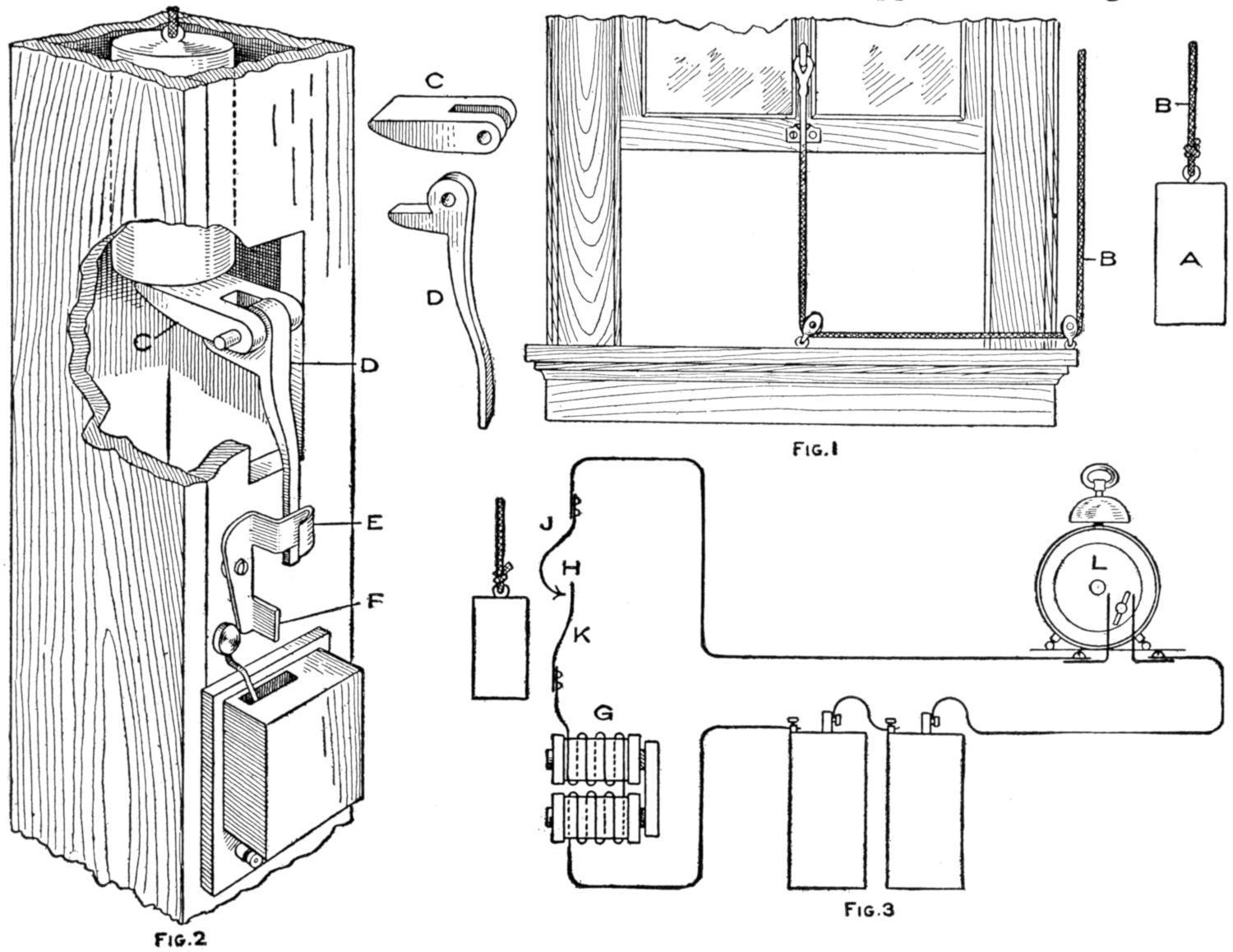
F�� 2
F�� 1
F��. 3
The Window is Automatically Closed by a Weight at the Time Set on the Alarm Clock When the Key Closes the Electric Circuit, Causing the Magnet to Release the Latch
A diagram of the electrical circuit is shown in Fig. 3, in which G represents the electromagnet to trip the trigger that supports the weight, and H the contact which remains open until the weight is raised to the upper position, when the spring J is forced against the spring K and closes the circuit. The circuit still remains broken until the contact L is closed by the key on the alarm clock, which is set in a vertical position between two springs representing the terminals of the wire. The contact H should be so located on the housing for the weight that it will be closed only when the weight is resting on the
latch C. The circuit is then opened as soon as the latch C is released, and the clapper will stop vibrating.
¶When a pencil becomes too short for the hand, apply paste to about 1 in. of the rubber end, roll on a sheet of paper about 6 in. long, and almost all of the pencil can be used.
A How to Make Hammocks
B� CHARLES M. MILLER
PART II—A Netted Hammock
good hammock should be about 12 ft. long, which includes 8 ft. of network and 2 ft., at each end, of long cords that are attached to rings. Seine twine, of 24-ply, is the best material and it will take 1¹⁄₂ lb. to make a hammock. The twine comes in ¹⁄₂-lb. skeins and should be wound into balls to keep it from knotting before the right time. Two galvanized rings, about 2¹⁄₂ in. in diameter, are required.
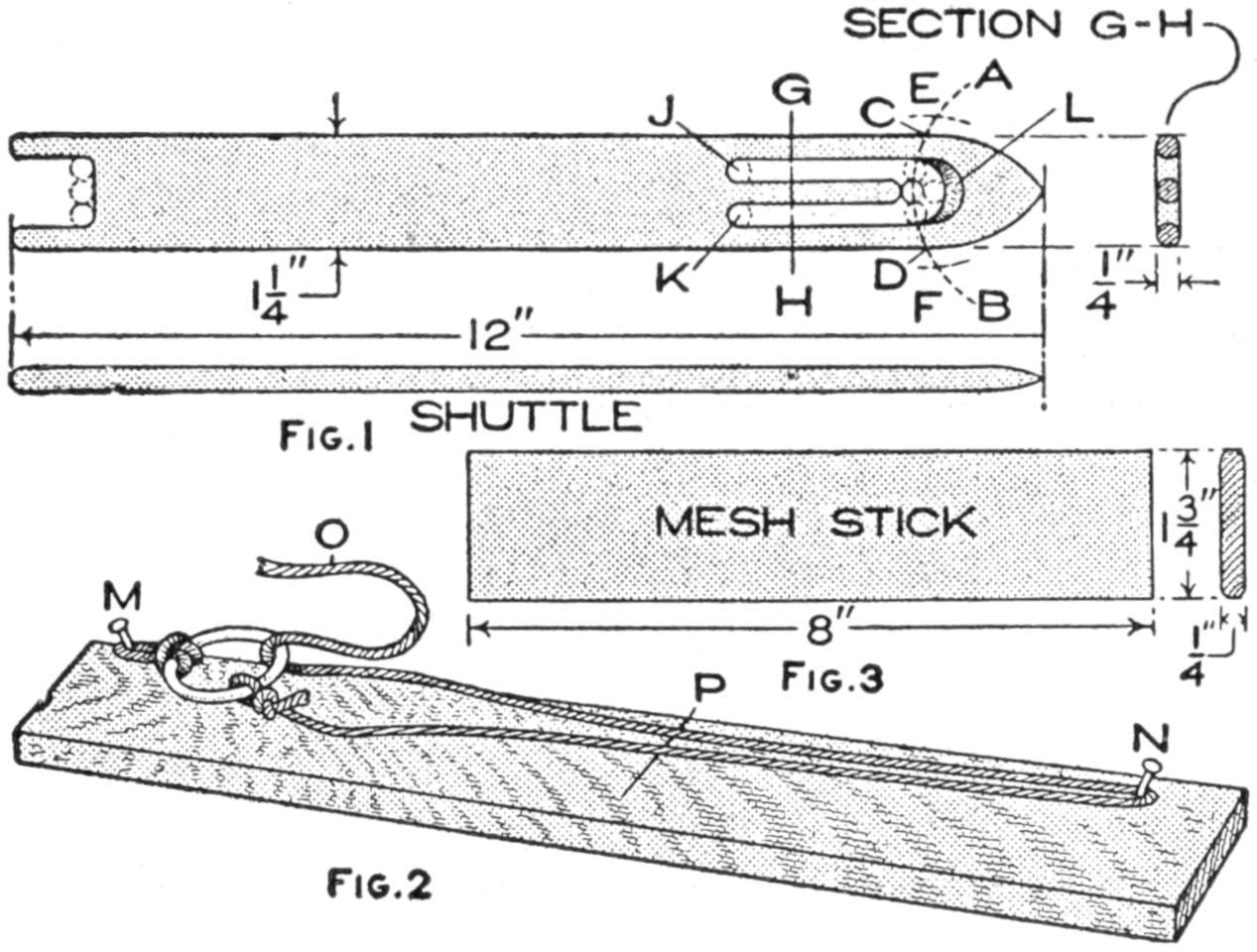
F��. 1
F�� 2
F��. 3
The Tools Necessary Consist of a Needle or Shuttle, a Guage Board, and a Mesh Stick
The equipment for netting a hammock consists of a wood needle, or shuttle, a gauge board for the long meshes at the ends, and a mesh stick for the regular netting of the main body of the hammock, all of which will be described in detail.
The shuttle is made of wood and is 12 in. long, 1¹⁄₄ in. wide, and ¹⁄₄ in. thick. The best material to use is maple or other hard wood, but very satisfactory ones can be cut from good-grained pine. The sketch, Fig. 1, shows the general shape of the shuttle, one end being pointed and the other forked. Lay out the pointed end before beginning to cut down to size. Place a compass at the center of the
end, and with a radius of 1¹⁄₂ in. describe the arc AB. With the intersections of this arc and the side lines of the needle, C and D, as centers, and the same radius, 1¹⁄₂ in., cut the arc AB at E and F. With E and F as centers draw the curves of the end of the shuttle. The reason for placing the centers outside of the shuttle lines is to obtain a longer curve to the end. The curves can be drawn free-hand but will then not be so good.
The space across the needle at GH is divided into five ¹⁄₄-in. divisions. The centers of the holes J and K at the base of the tongue are 3¹⁄₂ in. from the pointed end. The opening is 2³⁄₄ in. long. Bore a ¹⁄₄-in. hole at the right end of the opening, and just to the left three holes, as shown by the dotted lines. With a coping saw cut out along the lines and finish with a knife, file and sandpaper. Round off the edges as shown by the sectional detail. It is well to bevel the curve at L so that the shuttle will wind easily. The fork is ³⁄₄ in. deep, each prong being ¹⁄₄ in wide. Slant the point of the shuttle and round off all edges throughout and sandpaper smooth.
The gauge board, Fig. 2, is used for making the long meshes at both ends of the hammock. It is a board about 3 ft. long, 4 in. wide, and 1 in. thick. An eight-penny nail is driven into the board 1 in. from the right edge and 2 in. from the end, as shown by M, allowing it to project about 1 in. and slanting a little toward the end; the other nail N will be located later.
The mesh stick, Fig. 3, should be made of maple, 8 in. long, 1³⁄₄ in. wide and ¹⁄₄ in. thick. Round off the edges and sandpaper them very smooth.
The making of the net by a specially devised shuttle is called “natting,” or netting, when done with a fine thread and a suitably fine shuttle. Much may be done in unique lace-work designs and when coarser material and large shuttles are used, such articles as fish nets, tennis nets and hammocks may be made. The old knot used in natting was difficult to learn and there was a knack to it that was easily forgotten, but there is a slight modification of this knot that is
quite easy to learn and to make The modified knot will be the one described.
The shuttle is first wound by looping the cord over the tongue, as shown in Fig. 4, then bringing it down to the forked end and up to the opening on the opposite side; then the cord is again looped over the tongue and returned to the fork or place of starting. Continue winding back and forth until the shuttle is full. The shuttle will accommodate from 20 to 35 complete rounds. If the shuttle is too full it crowds in passing through the meshes and delays the work.

F�� 4
F�� 5
The Shuttle is First Wound and the Long Loops at One End Formed over the Gauge Stick
Attach one of the galvanized rings by means of a short cord to the nail in the gauge board, as shown in Fig. 2. At a point 2 ft. from the lower edge of the ring, drive an eight-penny finishing nail, N. Tie the cord end of the shuttle to the ring, bring the shuttle down and around
the nail N; then bring it back and pass it through the ring from the under side. The cord will then appear as shown. A part of the ring projects over the edge of the board to make it easier to pass the shuttle through. Draw the cord up tightly and put the thumb on top of the cord O, Fig. 5, to prevent it from slipping back, then throw a loop of the cord to the left over the thumb and up over a portion of the ring and pass the shuttle under the two taut cords and bring it up between the thumb and the two cords, as shown. Draw the looped knot tight under the thumb. Slip the long loop off the nail N and tie a simple knot at the mark P This last knot is tied in the long loop to prevent looseness. Proceed with the next loop as with the first and repeat until there are 30 long meshes.
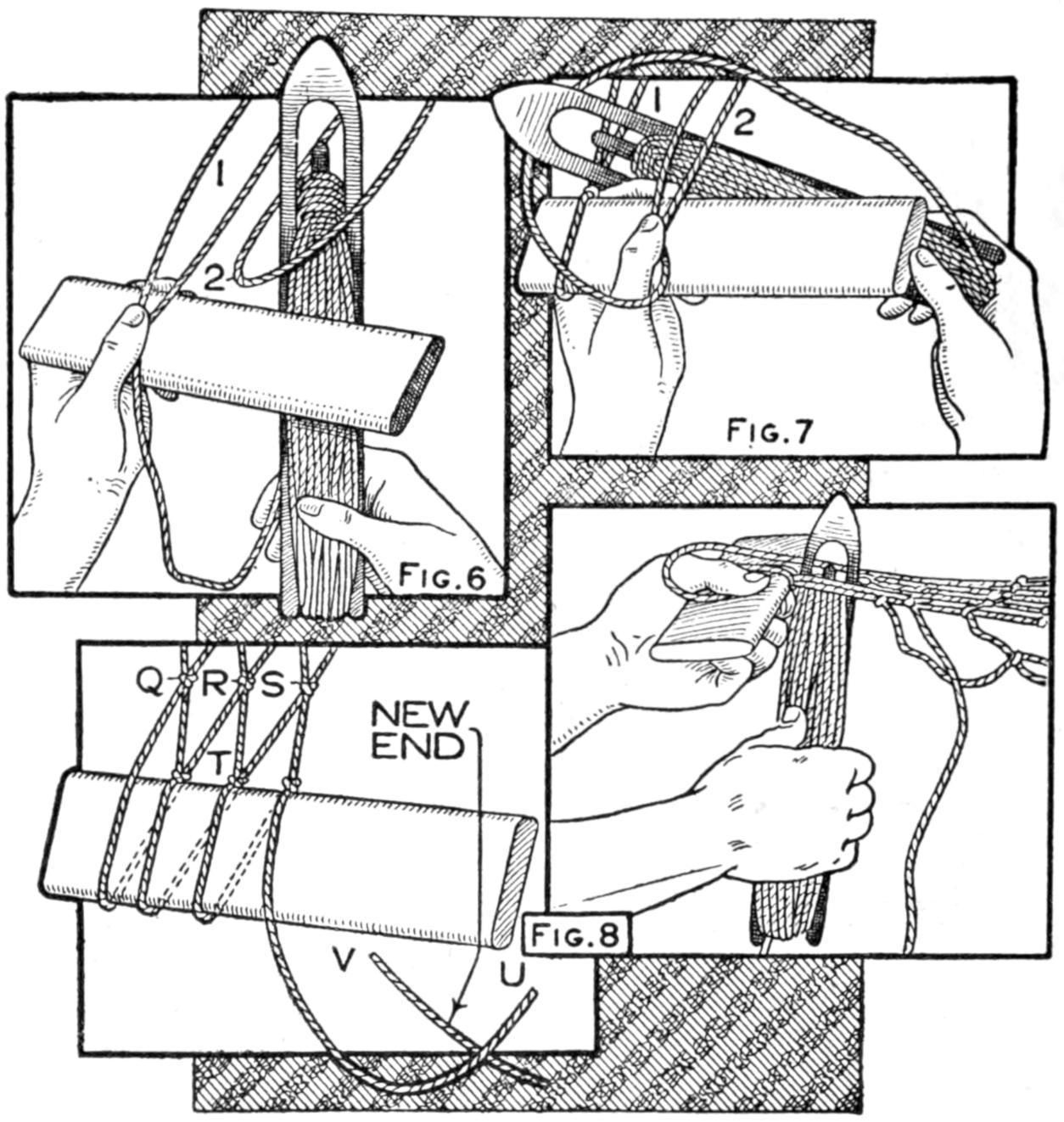
After the Completion of the Long Meshes, the Ring is Anchored and the Mesh Stick Brought into Use
After completing these meshes anchor the ring by its short cord to a hook or other stationary object. The anchorage should be a little
above the level for tying the knots of the net. Tie the cord of the shuttle to the left outside loop and always work from the left to the right; and the first time across see that the long meshes do not cross over each other, but are kept in the order in which they are attached to the ring.
After tying the cord to the mesh 1, Fig. 6, bring the mesh stick into use. Pass the cord down over the mesh stick, drawing the lower end of the loop down until it comes against the upper side of the mesh stick and put the thumb down upon it in this position to prevent slipping. Pass the shuttle up through the loop 2 and draw that down to the mesh stick. Shift the thumb from the first position to the second. Throw the cord to the left over the thumb and about the loop 2, as shown in Fig. 7, and bring the shuttle under both of the cords of mesh 2 and up between the large backward loop and the cords of the mesh 2. Without removing the thumb draw up the knot very tight. This makes the first netting knot. Continue the cord around the mesh stick, pass it up through mesh 3, throw the backward loop, put the shuttle under and up to the left of the mesh 3 and draw very tight, and do not allow a mesh to be drawn down below the upper side of the mesh stick. Some of these cautions are practically repeated, but if a mesh is allowed to get irregular, it will give trouble in future operations.
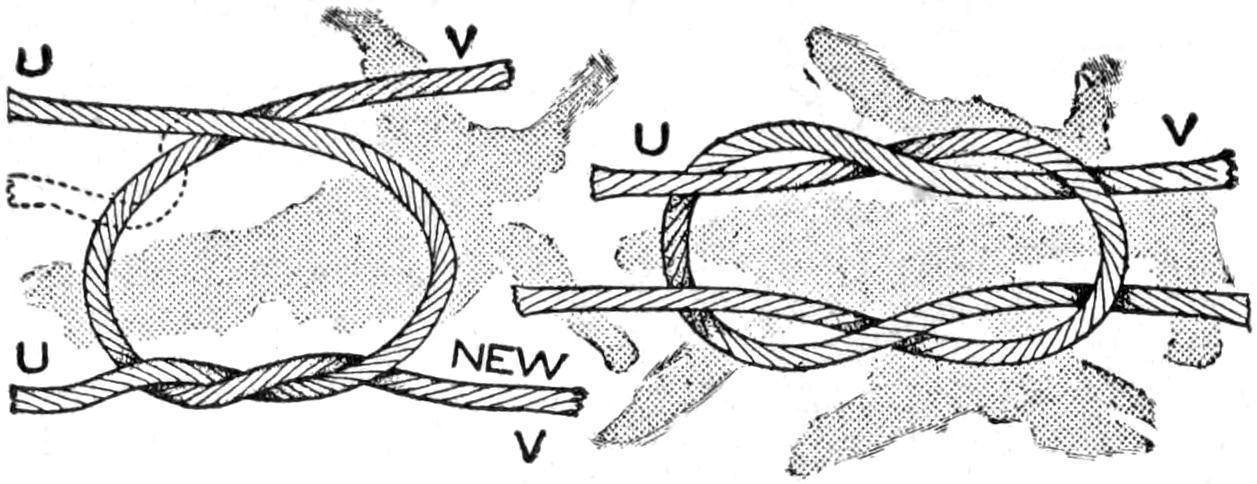
9
10
A Square Knot is Used to Join the Ends of the Cord When Rewinding the Shuttle
Continue across the series until all of the long loops have been used and this will bring the work to the right side. Flip the whole thing over, and the cord will be at the left, ready to begin again. Slip all the meshes off the mesh stick. It makes no difference when the meshes are taken off the stick but they must all come off before a new row is begun. Having the ring attached to the anchorage by a cord makes it easy to flip the work over. Be sure to flip to the right and then to the left alternately to prevent the twisting, which would result if turned one way all the time.
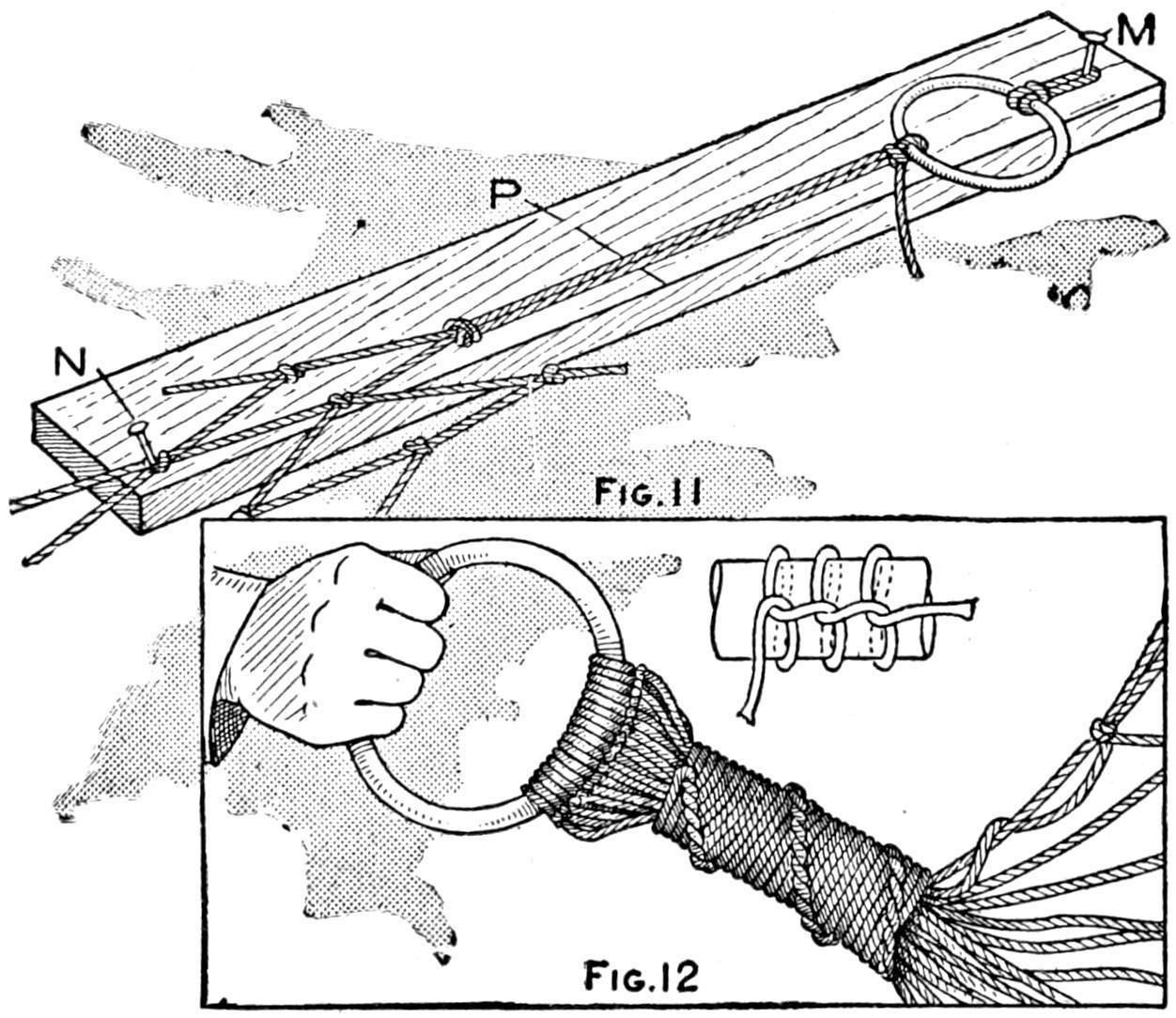
F�� 11
F�� 12
The Gauge Board is Again Used for the Long Loops at the Finishing End, Then the Cords are Wound
The first mesh each time across is just a little different problem from all the others, which may be better understood by reference to Fig. 8. The knots Q, R, and S are of the next previous series. The cord is brought down over the mesh stick and up through mesh 1, and when the loop is brought down it may not draw to the mesh stick at its center; it is apt to do otherwise and a sideway pull is necessary, which is pulled so that the knots Q and R are side by side, then the
knot at T may be tied. When the mesh 2 is drawn down it should pull to place without shifting, and also all the others of that row. Continue the use of the mesh stick until a net 8 ft. long is made. When the cord gives out rewind the shuttle and tie with a small knot that will not slip. The weaver’s knot is good if known, or the simple square knot shown in Fig. 9 is very good. It is too easy to make to need direction, but unless it is thrown over just right it will slip. Let U, Fig. 8, represent the short cord and V the new piece to be added. Place the cord V back of U and give U a complete turn around V, Fig. 9, and bring them together at a point above U, then to the front. Repeat the complete turn of U about V, shown by the dotted line, and pull tightly. If analyzed, it consists of two loops that are just alike and linked together as shown in Fig. 10.
When the 8 ft. of netting has been completed, proceed to make the long loops as at the beginning. The same gauge board can be used, but the tying occurs at both ends, and since the pairs cannot be knotted in the center, two or three twists can be given by the second about the first of each pair. The long loops and the net are attached together as shown in Fig. 11. Slip one of the meshes of the last run over the nail N, and when the cord comes down from the ring, the shuttle passes through the same mesh, and when drawn up, the farthest point of the mesh comes against the nail. After this long loop has been secured at the ring, the first mesh is slipped off and the next put on. All of the long loops at this end will be about three inches shorter than at the other end, unless the finishing nail N is moved down. This will not be necessary.
With a piece of cord about six feet long, start quite close to the ring and wind all the cords of the long loops together. The winding should be made very tight, and it is best to loop under with each coil. This is shown in Fig. 12.
The hammock is now ready for use. Some like a soft, small rope run through the outside edges lengthwise, others prefer a fringe, and either can be added. The fringe can be attached about six meshes down from the upper edge of the sides. The hammock should have a stretcher at each end of the netted portion, but not as long as those required for web hammocks.
Gourd Float for a Fishline
A unique as well as practical fishing-line float can be made of a small gourd. After the gourd has dried sufficiently, wire loops, to hold the line, are inserted, or rather, a single wire is run through and looped at both ends. The contents of the gourd need not be removed. Dip the float in a can of varnish, or apply the varnish with a brush.
Homemade Arc Light
Those who wish to produce an arc light for experimental purposes, or for the brief periods required by photography, will find the method of construction shown in the sketch very simple and inexpensive. Using the short lengths of carbons discarded by moving-picture operators, there is no difficulty in maintaining a good arc for 15 minutes, or more, without once manipulating the adjusting screw at the top.
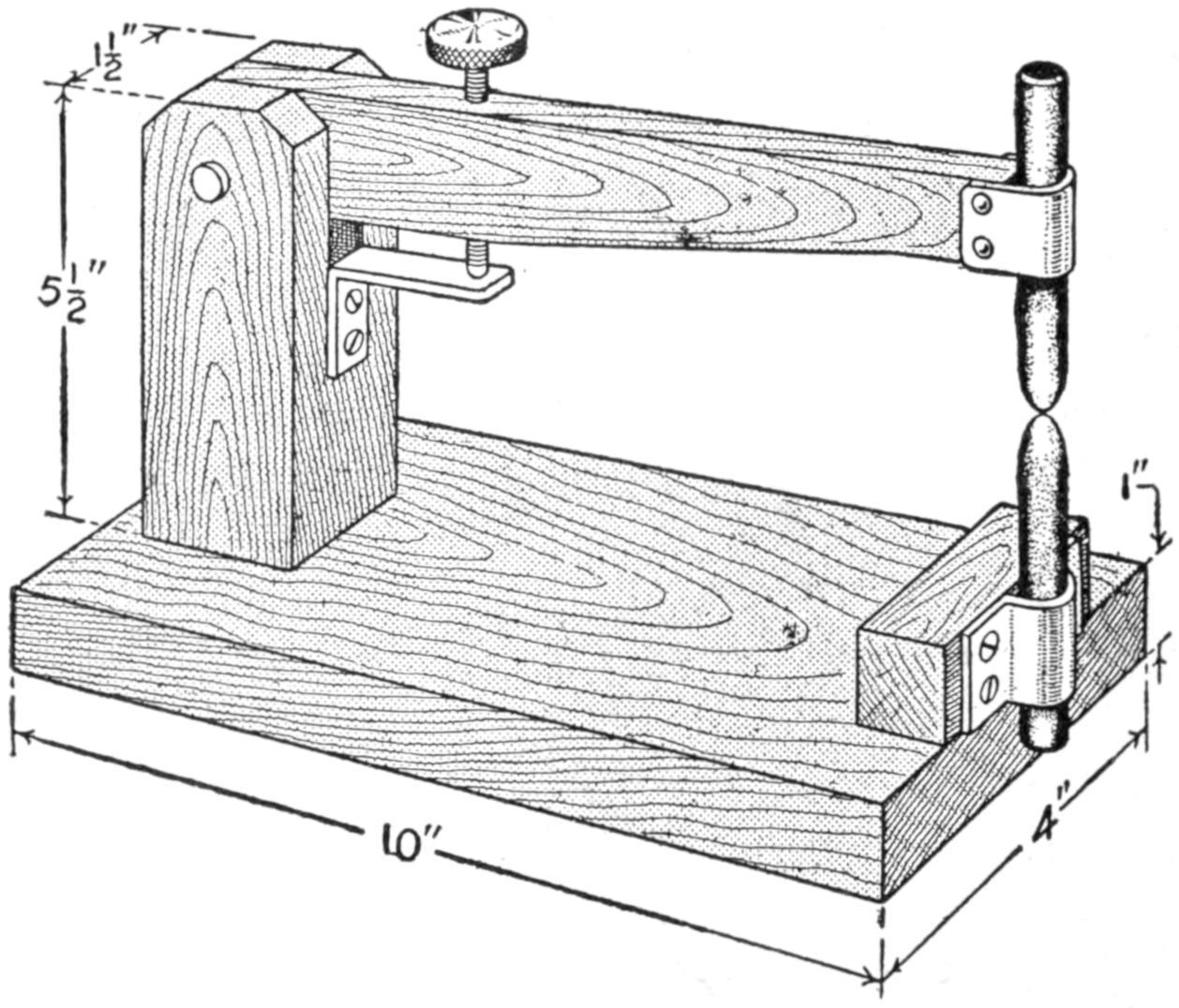
An Efficient Arc Light for Purposes Where a Light is Required for a Short Time
Only three pieces of wood are necessary besides the base, and in the preparation of these no particular care is necessary except to have the top arm swing freely up and down without any appreciable side movement. The carbon holders are merely strips of heavy tin, which need only be screwed up sufficiently tight to hold the carbons in place and yet permit their being pushed up when the top adjusting screw will no longer operate. This adjustment may be readily taken care of by means of a long, slender wood screw with the point filed off and a metal disk soldered to the top. Connections are made to the carbon holders either under a screw head or by soldering the wires to the metal.
In operating any arc light on the commercial 110-volt current some resistance must be placed in the circuit. An earthen jar of water with two strips of tin or lead for electrodes, will answer every purpose.
¶A small leak in an oil or water pipe on an automobile can be temporarily stopped by melting a piece of rubber over the hole.
Ornamental Pencil and Pincushion Holder
A nicely polished animal horn may be turned into an article of utility instead of being merely used as a wall ornament, as shown in the illustration. An old lamp base, heavy enough to balance the horn, and secured to it with a bolt, is all that is needed to effect the transformation.
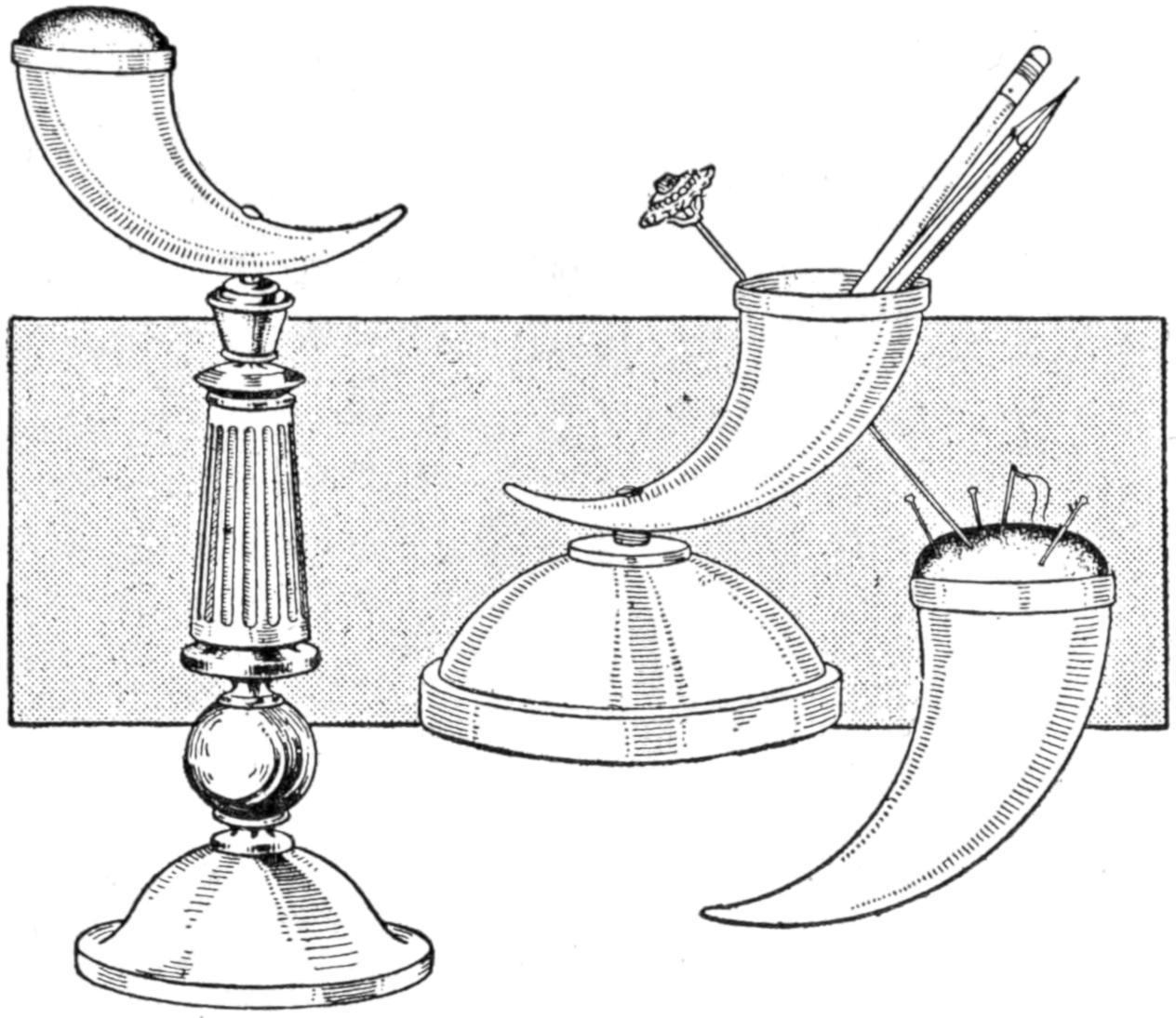
Fastening a Horn to a Base to Make an Ornamental Pen or Pincushion Holder
Knife to Trim Magazines for Binding
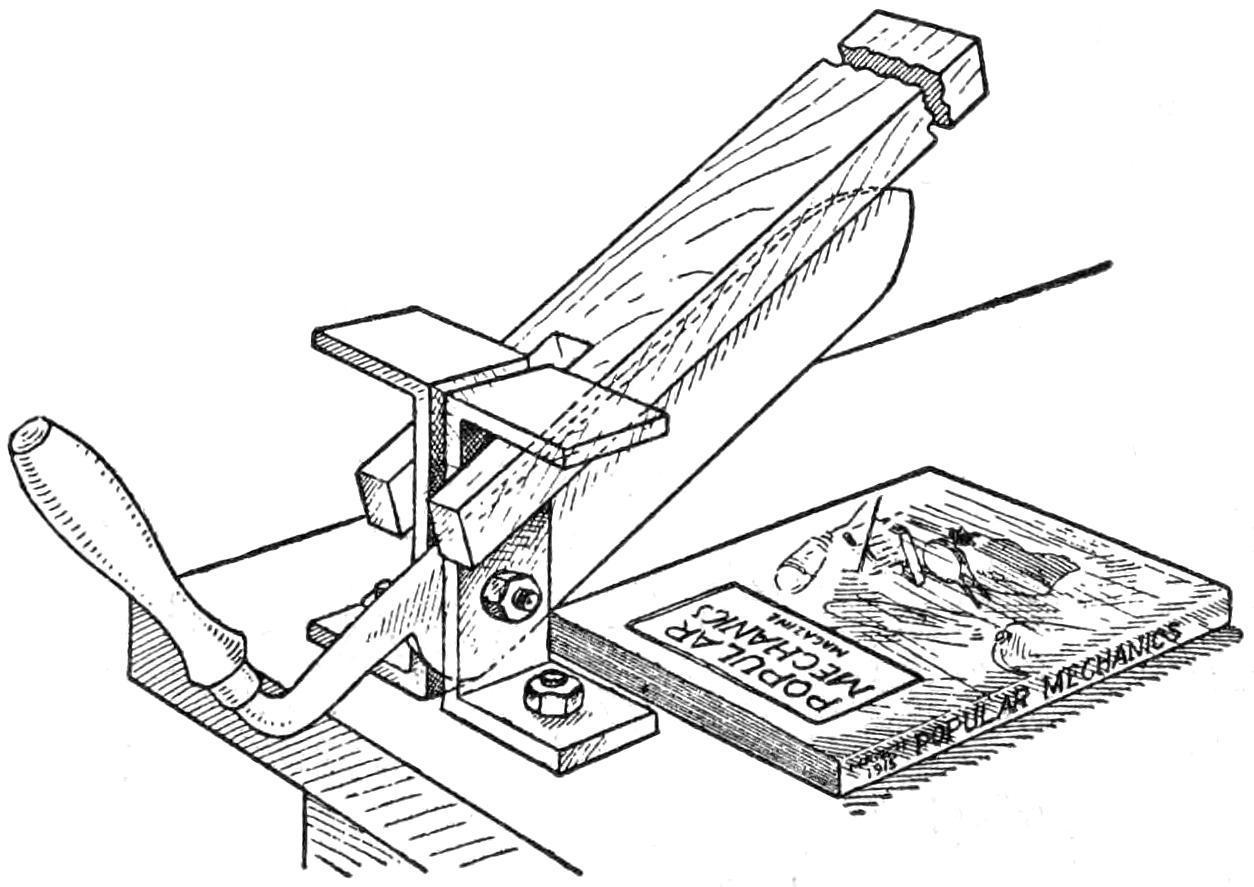
Cutter Made of a Large Straight-Edge Knife for Trimming Edges of Bound Magazines
There has been a number of descriptions telling how to bind magazines, but none how to trim the edges after having bound them. Desiring to have my home-bound volumes appear as well as the other books, I made a trimmer as follows: Any large knife with a straight edge will do for the cutter. I used a large hay knife. A ³⁄₈-in. hole was drilled in the untempered portion near the back of the handle end. Two U-shaped supports were made of metal and fastened to the top of an old table, between which the knife was fastened with a bolt. A piece of timber, 6 ft. long, 4 in. wide,
